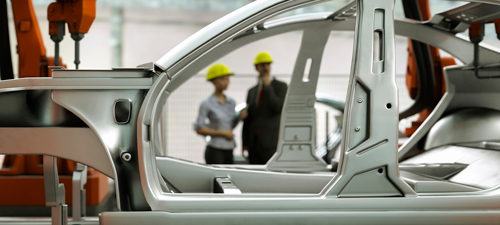GAS ASSIST INJECTION MOLDING: A VERSATILE MANUFACTURING ALTERNATIVE
Gas assist injection molding is one manufacturing technique used at KASO Plastics that can offer real benefits for specific products during their design and manufacturing; it can be a versatile alternative to more traditional injection molding techniques.
Traditionally, designs for plastic injection molded products needed to follow tried and true design guidelines for optimal results.
INJECTION MOLDING DESIGN GUIDELINES:
- Nominal wall sections must be maintained.
- Ribs must be 50-75% of the nominal wall.
- The part must be gated into the nominal wall.
- Injection molded resins must flow from thick to thin part sections.
With gas assist injection molding, today’s designs may deviate from this traditional wisdom, incorporating the gas assist process into production to create products with even better structure and aesthetics.
A BRIEF EXPLANATION OF GAS ASSIST INJECTION MOLDING:
Gas assist injection molding uses high pressure nitrogen to displace and push plastic material through specific areas in the mold cavity. The typical process includes the following steps.
The Gas Assist Injection Molding Process
- Molten plastic is injected into the mold.
- Pressurized nitrogen is then pumped into the mold cavity.
- The gas pushes against the walls, keeping the material from shrinking as it cools.
WHEN SHOULD YOU CHOOSE GAS ASSIST INJECTION MOLDING?
Gas assist is an excellent choice for parts with thick-walled bosses and ribs. After the plastic resin is injected into the mold and the traditional injection molding process commences, additional packing can be performed by introducing nitrogen gas through special pins in the thick-walled structure. Plastic that would normally sink in those areas instead will be pushed against the cavity from a small pocket of nitrogen from within.
Aesthetics aren’t the only reason for using gas assist injection molding. Large parts mean long flow lengths for plastic resin. Longer flow length causes increased pressure drop, making parts susceptible to flash, sink, and surface texture variance. Traditional injection molding design solves this by increasing the runner and number of gates, increasing runner weight exponentially and increasing weld-lines with each additional gate.
With gas assist molding, the additional runner can be built into the part to allow material to flow through the cavity with less resistance and pressure. That same internal runner system can be filled with nitrogen to push out any sink marks that would typically occur with a thicker wall. Weight is therefore reduced, which of course also reduces your overall project costs.
OTHER GAS ASSIST MOLDING BENEFITS
- Faster drying times
- Produce larger parts with smaller machines
Gas assist injection molding is an effective addition to other traditional injection molding techniques. Along with cost savings and a reduced risk of cosmetic flaws, it also opens the door for new product design and fresh innovation.
NITROGEN STORAGE
KASO Plastics produces, pressurizes, and stores our own nitrogen. Typical gas pressures used during molding are between 400-3500 psi. 3500 psi sounds extreme for molding, but the traditional injection molding process is pressurizing plastic resin between 4000 psi and 20,000 to 34,000 on the high end. The traditional process puts a lot of pressure on the front end, but the pressure drop after material enters the cavity causes pressure to drop off quickly the further it goes and as the material cools. With gas assist injection molding you can direct the pressure to specific areas and maintain it longer over an equal gradient in the gas channel.
Ready to get started with gas assist injection molding?








 Molding services for Agricultural customers
Molding services for Agricultural customers